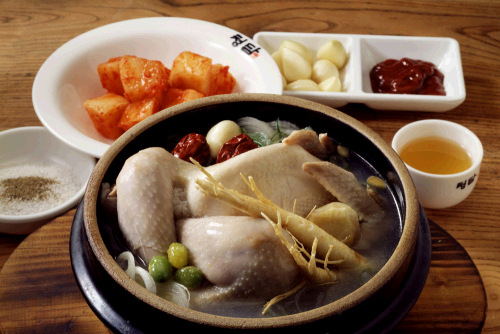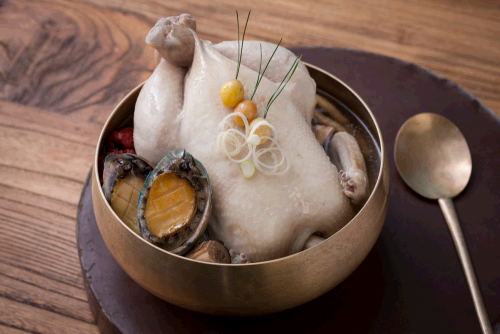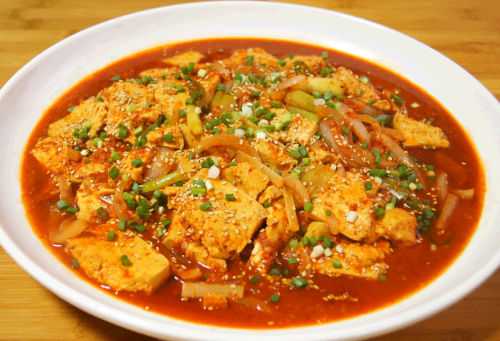-
Daejeon Medical Tourism
-
Medical Information
-
Tourist information
-
Community
-
Information Use
Tourist information
Food
-
Samgyetang
In Korea, there is a long tradition of eating superfoods on the three dog bok days, chobok, jungbok, and malbok, as a way to boost one’s health and energy in the sweltering heat. Samgyetang, or ginseng chicken soup, is made by boiling chicken with ginseng, garlic, jujubes, chestnuts, glutinous rice, pine nuts, and so on, and it is one of the most popular dishes eaten by those who are exhausted from the summer heat. When the temperature rises to extreme levels in summer, our body loses water, minerals, and other substances via perspiration. By eating samgyetang, made with protein-rich chicken and other nutritious ingredients, we can boost our immune system as well as our energy. Not only that, samgyetang ingredients have warm properties that help protect and soothe the gastrointestinal system from all the cold foods consumed in the summertime.
-
-
Sujebi
Sujebi (hand-pulled dough soup) is a popular dish for ordinary folks that is made by tearing off pieces from a flour dough by hand and plopping them one by one into a boiling broth made with anchovies, meat, and various other ingredients. According to the Institute of Traditional Korean Food, the dish was originally called “sujeobi,” meaning “food made by folding by hand,” but it gradually became altered into “sujebi” over the years. Back when flour was precious, sujebi was a special type of food that was eaten on celebratory occasions, but following the Korean War in the early 1950s, flour began to be supplied to Korea from abroad as part of the emergency relief supplies. As a result, flour became cheaper than rice, and it soon became a staple in the commoners’ diet. Along with bindaetteok (mung bean pancake), it became a dish that people craved whenever it rained.
-
-
Dolsotbab
This dish is served rice with mixed grains, millet, bean, sorghum, gingko nut, carrot, fresh vegetable cultivated nearby, and 20 different side dishes. Daejeon’s Hot stone pot rice has a 20 year history and its wholesome taste is differentiated from other Hot stone pot rices.
-
-
Daecheongho Maeuntang
Ssogari (Mandarin Fish) coming from Geumgang River as a Daejeon special product was presented to King’s dinner in Joseon Dynasty. Shintanjin Area located in the middlestream of Geumgang River has been famous for fresh water fish cuisine. Since 1981 when Daecheong Dam was completed, many restaurants have served fresh fish cuisine. famous spicy stew. It is cooked for twenty minutes with various ingridients.
-
-
Kalguksu
Daejeon has been famous for its kalguksu restaurants and you can taste rich broth and chewy noodles of spicy kalguksu, which is famous for its spicy soup; hand-made kalguksu with simple taste; clam kalguksu with rich and light taste of the soup; local kalguksu and seafood kalguksu.
-
-
Seolleongtang
After one restaurant started to make a stew out of beef bone 40 years ago (seolleongtang), it became the only restaurant to make this stew, Seolleongtang has become Daejeon citizens’ favorite food. boil for a long time, and tastes deep and great when you eat radish Kimch or cabbage Kimchi.
-
-
Sutgol Naengmyeon
Pyeongyang Sutgol Naengmyeon maintaining the taste over four genertations for more than 50 years. Easy to -eat noodles (90% buckwheat and 10% wheat flour) and meat broth (30% chicken broth , 70% gravy form the watery radish Kimchi)
-
-
Gujeuk Dotorimuk
Since 1980 when making Acorn Jelly Salad was only a part of a side job in the farm families of Gujeuk Village, this dish became Daejeon’s special and unique dish. Pour beef broth out of dried anchovies and seaweed on the sliced Acorn Jelly Salad and mix it with sliced Kimchi and roasted seaweed.
-
-
Stir-fried tofu
Daejeon's tofu duruchigi is a dish that cuts soft tofu into squares and stir-fry red pepper powder, garlic, soy sauce, and sesame oil with spicy seasoning to make use of the unique taste and aroma of tofu. Once you taste it, you become a regular and find it again.
-




























